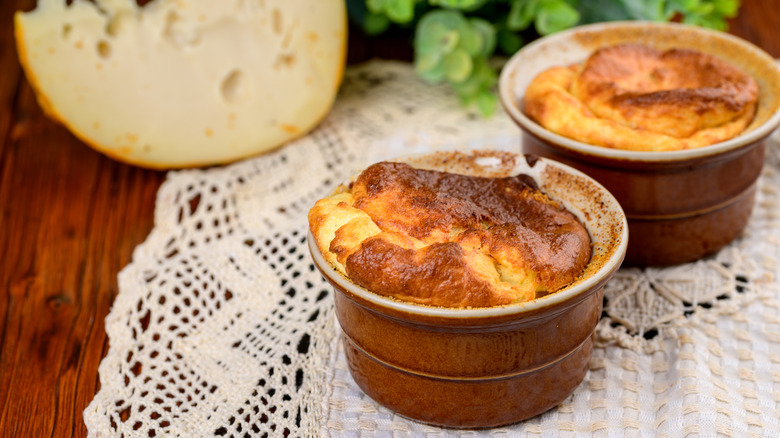The Strategic Way Jacques Pépin Plates Cheese Soufflé
Light, fluffy, and perfectly puffed — just the word "soufflé" conjures all the delicious things. Whether you prefer your soufflé in chocolate or cheese form, it's one dish that's guaranteed to fill both you and your ramekin all the way up.
Soufflé not only has to taste, but it should also look the part. Luckily, chef Jacques Pépin has a few words of wisdom on how to properly plate the dish to maximize its taste. You've likely seen cheese soufflés baked in ramekins, as well as those made in wide yet shallow dishes. Pépin told Food & Wine that these small and wide bowls are the best to use for making soufflés.
His reasoning? Well, Pépin's plating strategy actually has little to do with the soufflé's final appearance. In actuality, the way in which you plate your soufflé before it even hits the oven can have a major effect on its final texture. That fluffy, puffy, and slightly crisped soufflé top doesn't just get there on its own. You have to help your soufflé along, and you can do so by its plating.
Use a wide but shallow dish to maximize your soufflé's crust
When it comes to perfecting your cheese soufflé, the presentation is all part of a strategy. Pépin opts for wide and shallow gratin dishes because they maximize the amount of soufflé crust. The wider the dish, the more plentiful the crust. Before baking, he also adds a layer of cheese to help create a crunchy and crispy exterior. Soufflé-specific ramekins similarly get the job done, Pépin told Food & Wine.
Pépin's advice makes total sense, especially if you think about that first delicious bite of soufflé. You want to dig your spoon into a crispy soufflé exterior before you get to all that gooey, cheesy filling beneath. Perhaps the same plating strategy holds up in making the chocolate version, though you'll want to swap out that final cheese coating for something a little more complementary.

